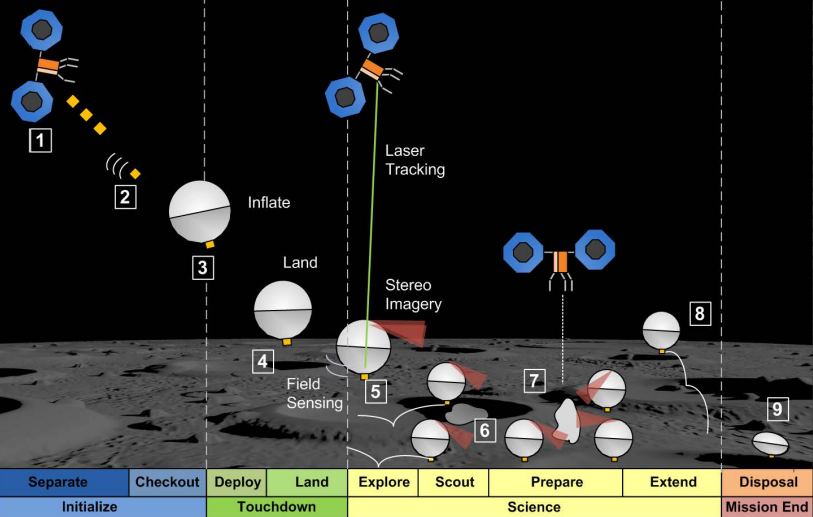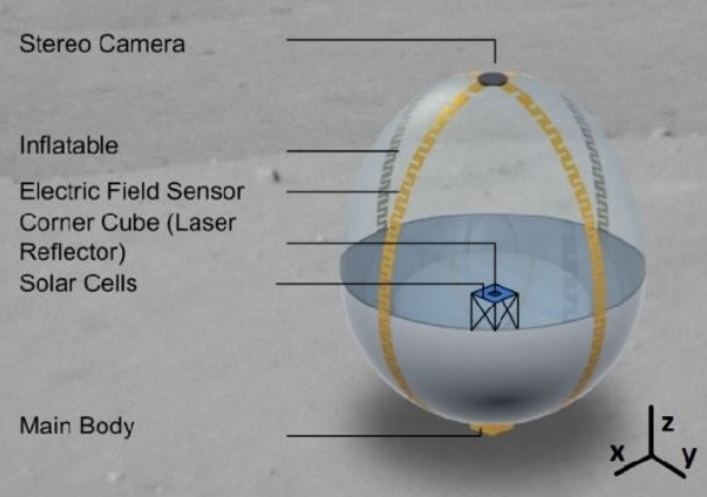There are so many asteroids. Just in our own backyard, we’ve found over 30,000 Near Earth asteroids. Exploring them using traditional methods and launching a custom-made mission, like Hayabusa or OSIRIS-REx, would almost certainly be cost-prohibitive. So how can we assess whether they would make good targets for early asteroid mining missions? Ground imaging can help, but there’s nothing like being on-site on one of these asteroids to get a sense of what they are made of. Those visits would be much easier if we mass-produced the Asteroid Mobile Imager and Geologic Observer (AMIGO).
AMIGO is a concept developed at the University of Arizona. It is a standard design that fits into a 1U CubeSat package of 10 x 10 x 10 cm and carries an array of scientific equipment with it. These include a magnetometer, an electric field sensor, a microscope, a laser range finder, an inertial measurement unit (IMU), and, of course, a camera.
Each of these instruments would play a role in determining what both the inside and outside of an asteroid of made of. The microscope could take close-up pictures of samples directly underneath the lander. At the same time, the IMU could be used as a proxy for seismic data that could help determine the asteroid’s internal structure.

Credit – Schwartz et al.
One way to utilize these various sensors is to use another feature of AMIGO – its ability to bounce. When fully deployed from its 1U packaging, it expands to about 1m in size. There’s still some debate on what exactly the inflatable surface will be made out of and what exactly it will be inflated with. Still, the underlying idea is creating a protective, hard-to-damage shell around most of the scientific components.
This unique shape also allows AMIGO to use a novel propulsion system. It can use a miniaturized micro-electromechanical system (MEMS) to maneuver itself, mainly by bouncing around an asteroid with small gravity. During these hops, it can also use its onboard sensors to determine gravity at specific spots along the asteroid, thereby further helping flesh out its internal structure.
Several of these relatively small bots could be deployed on a single asteroid from a mothership, and they could use that same mothership to send data and download navigational commands. Solar panels could power them and should be able to have a relatively long life span, given the rapidity with which most asteroids rotate. Nuances of its inflatability can also ensure that an AMIGO always lands facing “up” with its solar panels directed at the Sun.
Those solar panels themselves can even act as a secondary sensor by calculating the amount of dust that ends up landing on them. What’s even more impressive, almost all of these sensors, and the control scheme to orient and maneuver the spacecraft, can be bought off the shelf. While the overall mission concept is still at a relatively early Technology Readiness Level, many of the components already had a spaceflight heritage. Combining them into a single platform, even such a small one should be possible.
But that remains just a possibility for now, as much hasn’t been published on the concept since 2019, when a flurry of papers was released. It remains to be seen if these tiny, bouncing balls of capability will ever see the light of deep space.
Learn More:
University of Arizona ASTEROIDS Lab – Asteroid Surface Exploration
Schwartz et al. – Asteroid Mobile Imager and Geologic Observer (AMIGO)
UT – Robotic asteroid mining spacecraft wins a grant from NASA
UT – Study Looks at Making Asteroid Mining Viable
Lead Image:
Artist’s depiction of a fully inflated AMIGO.
Credit – Schwatz et al.

